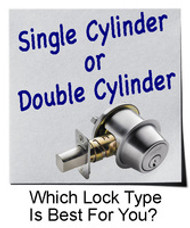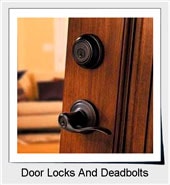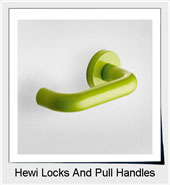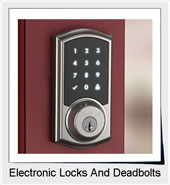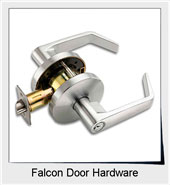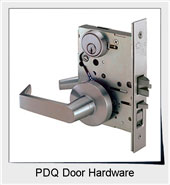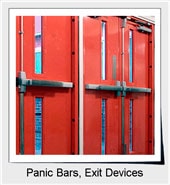Single and Double Cylinder Door Locks | Which is Best?
Posted by Gary Lederman on 7th May 2016

Single Cylinder deadbolts, entry knobs, and handlesets are operated with a key from the outside, but do not require a key for locking or unlocking from the interior of the property. Instead, the door is locked or unlocked using a thumb-turn style lever.
Single cylinder locks are more common than double cylinder. The two main reasons for this are efficiency and economy. Single cylinder locks are usually less costly to purchase and install than double cylinders. They are also more convenient, since there’s no need for a key to operate the lock from the inside. A simple thumb turn locks and unlocks the door.
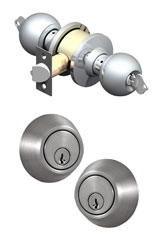
Double Cylinder deadbolts, entry knobs, and handlesets require a key for locking and unlocking from both the exterior and the interior of the property. There is no thumb-turn mechanism on a double cylinder lock.
Why purchase a double cylinder lock? The main reason for doing so is enhanced security. This is particularly true for doors that have glass panels or adjacent windows (i.e. an arm’s reach). An intruder could unlock the door by breaking the glass and reaching inside. Installing double cylinder locks on exterior doors eliminates this problem. Since there is no thumb-turn, intruders cannot reach inside to unlock doors manually through broken windows.
However, the double cylinder design raises a safety issue. In the event of a fire, occupants will be prevented from escaping through double-cylinder locked doors unless the correct key is used. This is often an avoidable cause of death in house fires. Locking the deadlock only when there are no occupants inside the building or leaving the key near the keyhole can mitigate the risk. Some fire departments suggest putting the key on a small nail or screw near the door at floor level, since the cleanest air is at floor level and you may be crawling to get to the exit, thus placing the key where it is easiest to find.
Single cylinder dead locks (with an unlocked twist mechanism on the inside of the door) do not have this problem, and therefore are most commonly used on fire exits. Some areas have fire safety codes that do not allow a locked exit.

